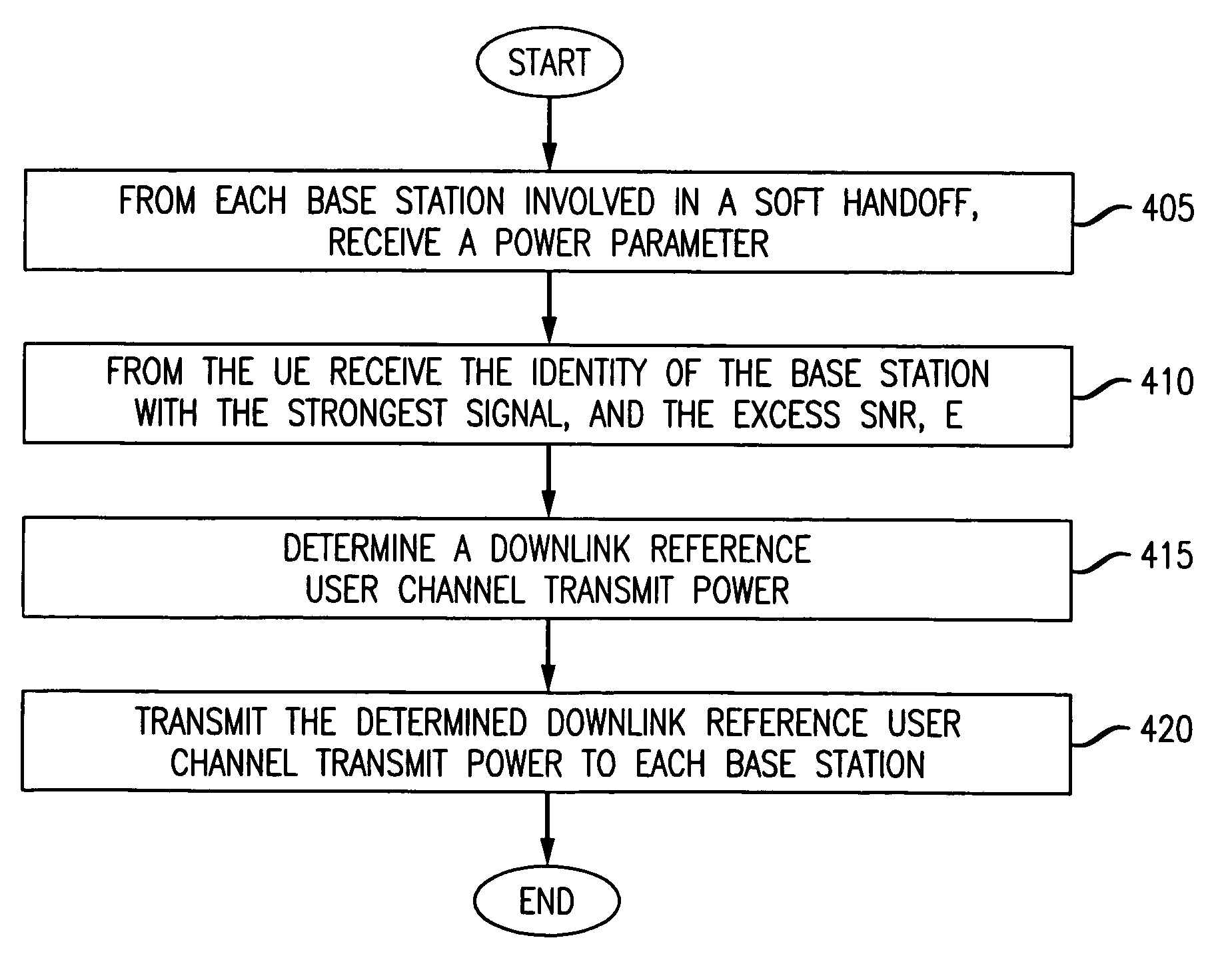Method to control base station transmit power drift during soft handoffs
a transmission power and soft handoff technology, applied in the field of communication, can solve the problems of user channel transmit power drifting way beyond and waste of power, and achieve the effect of good signal quality and waste of power
- Summary
- Abstract
- Description
- Claims
- Application Information
AI Technical Summary
Benefits of technology
Problems solved by technology
Method used
Image
Examples
Embodiment Construction
[0014]The inventive concept will be described in the context of a CDMA (Code Division Multiple Access)-based UMTS (universal mobile telecommunications system) Terrestrial Radio Access Network (UTRAN), such as that being developed by the 3rd Generation Partnership Project (3GPP). (3GPP is a standards body comprising the European Telecommunication Standards Institution (ETSI) and several other international standards bodies. Additional information on 3GPP can be found at: “http: / / www.3gpp.org.”)
[0015]A portion of a UTRAN based wireless system in accordance with the principles of the invention is shown in FIG. 1. Other than the inventive concept, the elements and interfaces shown in FIG. 1 are well-known and will not be described in detail (e.g., see Technical Specification (TS) 25.401 V.3.3.0: UTRAN Overall Description for more information). UTRAN 100 is coupled to a core network (CN) 190 via an Iu interface. (The core network represents, e.g., other servers and gateways for providing...
PUM
 Login to View More
Login to View More Abstract
Description
Claims
Application Information
 Login to View More
Login to View More - R&D
- Intellectual Property
- Life Sciences
- Materials
- Tech Scout
- Unparalleled Data Quality
- Higher Quality Content
- 60% Fewer Hallucinations
Browse by: Latest US Patents, China's latest patents, Technical Efficacy Thesaurus, Application Domain, Technology Topic, Popular Technical Reports.
© 2025 PatSnap. All rights reserved.Legal|Privacy policy|Modern Slavery Act Transparency Statement|Sitemap|About US| Contact US: help@patsnap.com



